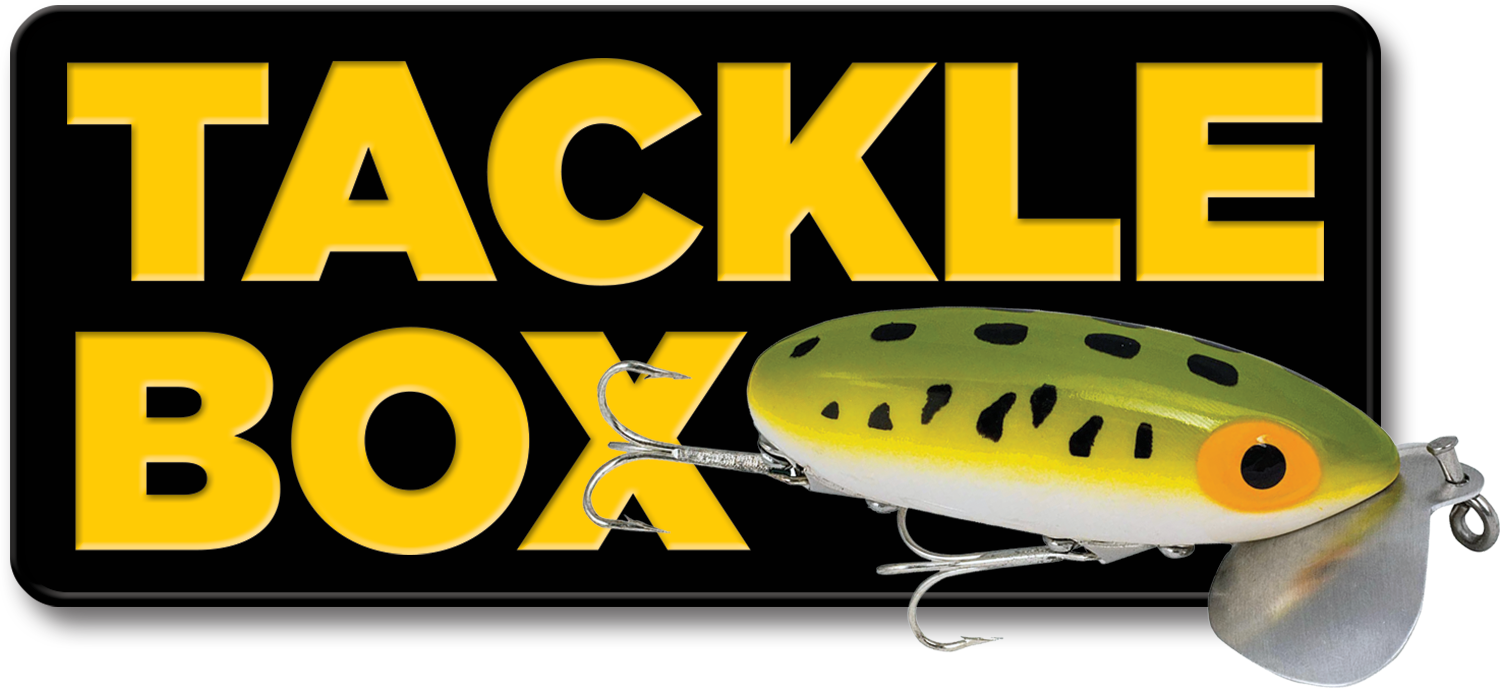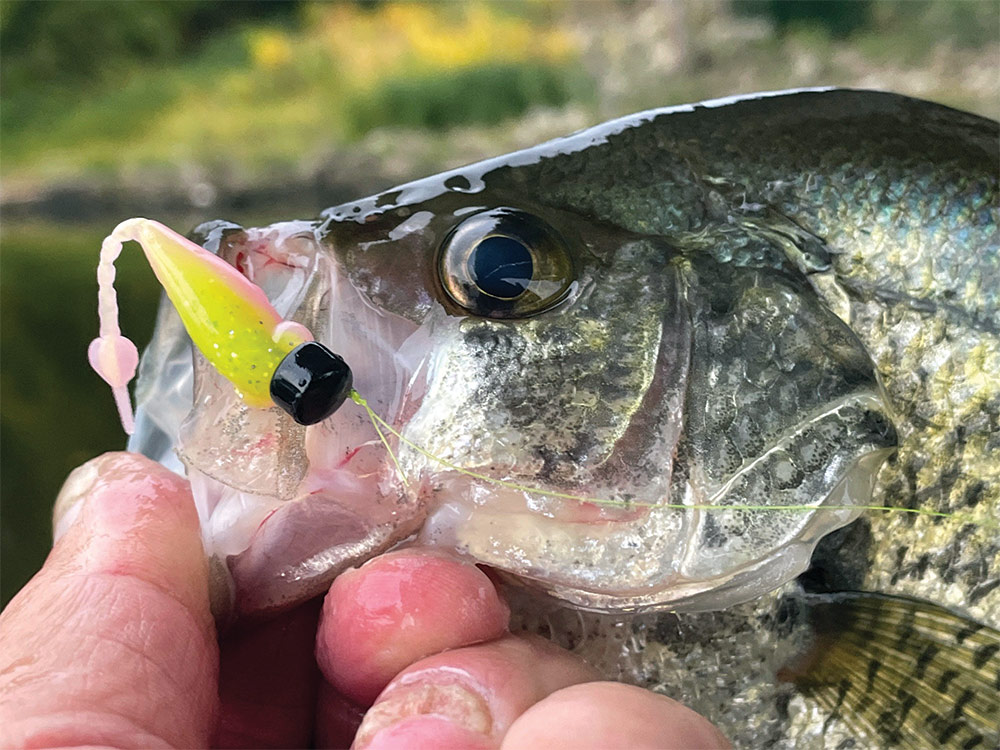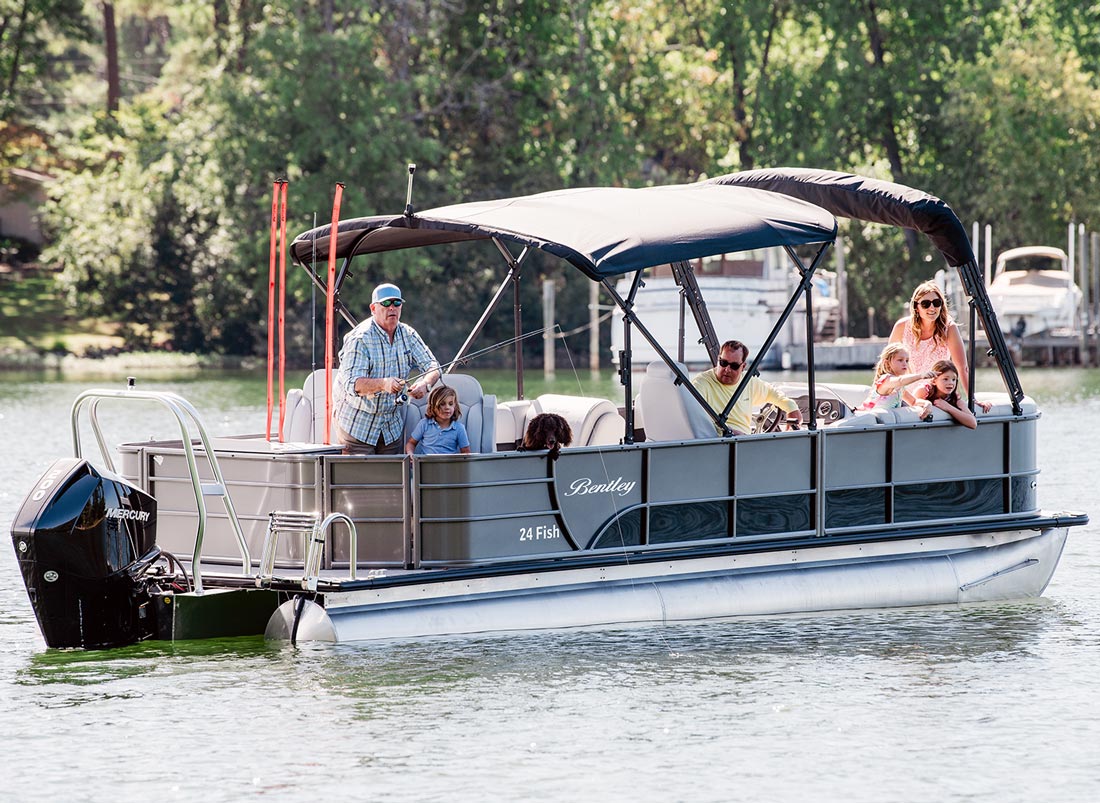
However, once that window closes with warming waters, most opportunistic anglers such as me move on to target gamefish species that are more available as the spring progresses, and may not give ‘slabs’ another serious thought until the next spring.
Recently, I had a guest on my radio show who is an avid crappie angler, so much so that he earned the nickname “Crappie Commander” and a respectable Facebook following. Aka Lonnie Henderson, the Ohio angler successfully targets his namesake 12 months out of the year. But one of his favorite times to catch big crappies from open water is now, and primarily from impoundments built for water supply or flood control reservoirs that are drawn down seasonally and often don’t freeze over. During the winter, when those reservoirs are at the lowest and the fish concentrated in the remaining open waters, Henderson finds his largest crappies of the season.
“The key is locating the original streambeds in those reservoirs,” advises Henderson. “The crappies will stack up in outside bends among rubble and other structure, and you can catch them all day long using jigs or bobber-and-minnow rigs.”
The Commander suggests using lake topo maps as well as sonar to locate the path of the stream that was dammed to form the reservoir. Those sub-surface paths remain below as slender trenches of deeper water and are often joined by tributary streams that can create an underwater network of deeper fingers of water that hold baitfish and the gamefish that follow.
Whether you find winter crappie stacked in submerged streambeds, huddled around submerged shrubs, tucked into fields of green foliage or suspended in the abyss, catching slabs this time of year isn’t a guarantee. Plummeting water temps and declining metabolic rates induce sluggish, unwilling-to-chase attitudes in cold-blooded crappies, which is why dropping a rapidly sinking lure past crappie snouts is discouraged: the fish need time to watch the bait before deciding to eat or not.
About the same time, I was researching Henderson and winter crappie fishing for his guest appearance, I ran across word of a popular bass pro who fishes open water for crappie in the dead of winter – from late fall until early spring actually – using an adaptation of a rig that I have shared with PDB readers before. After being introduced to Z-Man mushroom jigs and buoyant ElaZtech soft plastics by a smallmouth guide on the Susquehanna River, I brought some home and started slaying bass and saugeyes on their jig and grub combos, affectionately known as “Turds” due to their slogan “TRD” which stands for The Real Deal.
A season of big time bass tournaments behind him and back on his favorite crappie lake, Major League Fishing star David Walker understands cold water crappie habits all too well. It’s Walker’s favorite time to pursue papermouths, white bass and other panfish. This season, though, he’s even more excited than usual, given some interesting new arrivals to his slow-drop bag of tricks.


On his hometown Douglas Lake in Tennessee, and numerous other reservoirs around the country, winter means cooling water and receding lake levels. Dropping water, Walker knows, can consolidate crappies around remaining wood cover, docks, submerged vegetation or suspended in open water.
“When the water falls and a lot of my favorite cover is left high and dry, I’ll chase crappies like I’m bass fishing on a smaller scale,” Walker explains. “I’ll target ends of points or go right down the middle of pockets in creek arms, looking for bait and groups of crappies on sonar. With live sonar, I’m also sniffing out isolated pieces of cover—sometimes, a single rock or log is enough to hold some fish. What’s also cool is that crappies school by size, and often you’ll catch the biggest fish in the school first. But I always release those bigger 14- to 16-inchers in favor of 11s and 12s, which taste so much better in crappie tacos.”
Walker’s favorite crappie lure —a Z-Man Shad FryZ swimbait—is much smaller than the bass-sized offerings I have been using. But he claims its small size, subtle, lively action, buoyancy and durability put it right at the top of his crappie lure depth-chart.
“What’s cool is I can rig the Shad FryZ on a slightly heavier 1/10-ounce Micro Finesse ShroomZ jig head and retain plenty of weight for casting distance. Meanwhile, the bait’s buoyant ElaZtech material slows its rate of fall. So, in terms of drop-speed, the lure flutters and fishes more like a 1/16-ouncer; it’s got that nice little tail-kick on the fall that attracts a lot of crappies.
“As veteran anglers know, crappies primarily feed up,” he continues. “So, keeping your lure at or a few feet above their eye level is of utmost importance, especially in colder water.”
Unlike traditional PVC soft plastics, which sink like rocks, Walker notes that ElaZtech baits float, slowing the drop-speed of the jighead. “That’s something you simply can’t do with other crappie baits, because traditional plastisol baits sink fast—often shooting right through the active strike zones of coldwater panfish.”
To further tweak rate of fall, Walker spools with “straight 6- or 8-pound test braided line and no leader. After trying those micro-thin 2-, 3- and 4-pound test braids, I realized thicker diameter braid, which floats, slows the lure’s rate of fall a bit more.”
While most anglers target shallow water fish in the winter, Walker often prefers to pursue bigger, less pressured crappies in 15 to 25 feet of water. “Simply count the lure down to the right depth and begin a slow, steady retrieve. The hover can also be key to triggering reluctant fish,” he adds. “While retrieving, I’ll pause every 5 to 10 seconds. Let the bait stop and hang momentarily. That hesitation or hover—when the bait isn’t darting away—often makes a fish that’s been following commit; it opens its big pouting jaw and gulps the bait down.”
Sounds good to me!


- LOA:24’8″
- Beam:8’6″
- Dry Weight:2,480 lbs.
- Person Capacity:14
- Load Capacity:2,380 lbs.
- Fuel Capacity:32 gals.
- Shaft Motor:20”
- Max HP:250hp
www.bentleypontoons.com
This 243 from Bentley is a boat I would enjoy for crappie-catching, cruising or just chillin’. Look for a model at your local boat show this winter to see one up close and personal.
- LOA:24’8″
- Beam:8’6″
- Dry Weight:2,480 lbs.
- Person Capacity:14
- Load Capacity:2,380 lbs.
- Fuel Capacity:32 gals.
- Shaft Motor:20”
- Max HP:250hp
www.bentleypontoons.com